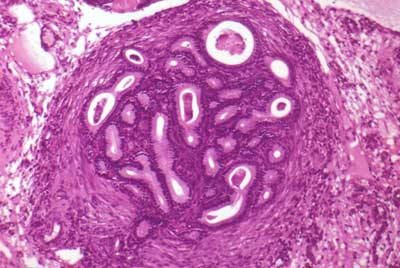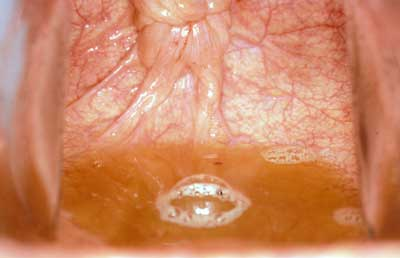The Breeding Season Actually Starts in November in the Northern Hemisphere!!!
By Dickson D. Varner, DVM, MS, Diplomate ACT
Charles C. Love, DVM, Ph.D., Diplomate ACT
Terry L. Blanchard, DVM, MS, Diplomate ACT
Steven P. Brinsko, DVM, MS, Diplomate ACT
Department of Large Animal Clinical Sciences, College of Veterinary Medicine
Texas A&M University
Although the upcoming breeding season is 3 months away, a successful year for 2005 begins with preparation of mares and evaluation of stallions right now.
Barren mares: Mares in this category are not pregnant for a reason. It could be that they were not allowed an opportunity to become pregnant in 2004, or were only bred on a very limited basis. On the other hand, these mares may have underlying problems that have rendered them open (not pregnant). These mares should receive thorough physical and reproductive examinations now, so that any problems may be corrected prior to the onset of the breeding season. Common reproductive problems include endometritis (inflammation of the lining of the uterus), uterine infections, periglandular fibrosis (a form of uterine scarring; Figure 1) and lymphatic cysts. Some mares require surgical procedures to correct reproductive-related problems, such as poor perineal/vulvar conformation (Figure 2), urine pooling (Figure 3), cervical lacerations (Figure 4), or recto-vestibular fistulas or lacerations (Figure 5).
Figure 1: Periglandular fibrosis in mare endometrium.
This abnormality can only be detected by evaluation of
an endometrial biopsy.
Figure 2: Poor perineal and vulvar conformation. This
condition can be corrected surgically by perineal
reconstruction and a Caslick's operation.
Figure 3: Urovagina (or urine pooling in vagina). This
condition can be corrected with urethral extension surgery.
Figure 4: Cervical laceration. This defect must be corrected
surgically for a mare to regain fertility.
Figure 5: Recto-vestibular laceration. These defects occur
at the time of foaling. Surgical correction can oftentimes
restore fertility in these mares.
Specific reproductive diagnostic tests that are generally recommended for barren mares include palpation and ultrasonographic evaluation of the ovaries, uterus, and associated structures; procurement of uterine culture, cytology, and biopsy specimens; and visual and digital inspection of the vagina and cervix. Treatments, if required, are dictated by the diagnostic findings.
Maiden mares: These mares are generally considered to be the most fertile group in a broodmare population because the average age is usually lower than that of the barren and foaling mares. In addition, these mares have not been used previously for breeding purposes, so their reproductive tracts are considered to be pristine. While maiden mares can be highly fertile, some situations can lessen their fertility. Older maiden mares can have more periglandular fibrosis in the endometrium than similarly aged mares that have had multiple foals. Mares retiring from athletic performance can require several months to recover from the stress and medications associated with a competitive athletic career. Maiden mares can also have congenital abnormalities of the reproductive tract that preclude their use as broodmares.
Specific reproductive diagnostic tests that are generally recommended for maiden mares include palpation and ultrasonographic evaluation of the ovaries, uterus, and associated structures; and visual and digital inspection of the vagina and cervix. Uterine culture, cytology, and biopsy are usually reserved for only selected cases. A common problem of maiden mares that can easily be corrected in most instances is a persistent hymen (Figure 6). This condition can generally be corrected by puncturing the hymen with a gloved hand, but surgical correction is sometimes required.
Figure 6. Persistent hymen in maiden mare. This hymen
must be removed before the mare can be bred by natural
service or inseminated artificially.
Pregnant mares: These mares require specific nutritional and immunization protocols to maximize their health, and the health of their newborn foals. Owners of pregnant mares should consult their nutritionist and veterinarian regarding proper care of mares at various stages of pregnancy. Pregnant mares should be checked in late fall or early winter to verify that they are still pregnant. The mares should be evaluated daily for signs that could reveal problems with the pregnancy, such as depression, colic-like signs, premature udder development and milk production, or vulvar discharge.
Stallions: Oftentimes, stallions are not monitored for reproductive health following the close of the breeding season; yet, they are expected to perform at full function at beginning of the ensuing season. It is advisable to closely evaluate the individual mare breeding records for each stallion during the fall so that one can determine if a stallion is experiencing any loss of fertility that may impact its mare book for the coming season. Critical evaluation of breeding records can be tedious if software programs are not used. Generally, it is easiest for stallion owners to provide the information to a reference laboratory equipped with appropriate software for critical evaluation. This service is offered by the College of Veterinary Medicine, Texas A&M University.
Evaluations of semen quality, testicular size (Figure 7) and texture, and breeding behavior are indicated in the fall months so that if problems are identified, corrective action may be taken in a timely manner. Stallions that experience a drop in fertility when bred by conventional means can oftentimes resume a normal level of fertility when specific assisted-reproductive techniques are applied.
Figure 7: Ultrasonographic evaluation of testis.
Measurements of width, height, and length can
be used to accurately determine testicular size
and predict sperm production rate.
Artificial lighting programs: Adjustment of photoperiod through application of an artificial lighting program is critical to any equine breeding program that begins before April. Horses are naturally seasonal breeders, with an evolutionary system that allows fertile breeding to occur in the long days of the year (ie, May to September). Alteration of day length with an artificial lighting program will accelerate the onset of the first ovulation of the year in mares and, hence, allow for successful breeding earlier in the year.
Mares that should receive artificial light stimulation include maiden mares, barren mares, and pregnant mares that are due to foal prior to April. The most common method involves application of light such that mares are exposed to 14-16 hours of light per day. Studies to date suggest that mare respond most favorably when additional lighting is applied in the mornings and evenings, or the evenings only, as opposed to mornings only. Mares should be started on an artificial lighting program no later than December 1 to ensure that they are cycling normally in mid-February.
Generally, stallions do not require an artificial lighting program. Stallion exposure to a lighting program similar to that of mares will stimulate heightened sperm production early in the breeding season. The down side is that this can lead to accelerated reduction of sperm production later in the breeding season when breeding load is usually highest. Horse owners are encouraged to contact their veterinarian regarding appropriate timing, light intensities, and locations for effective artificial lighting programs.







Animal Reproduction Systems
800-300-5143












